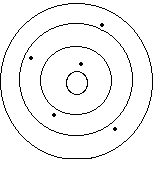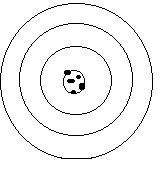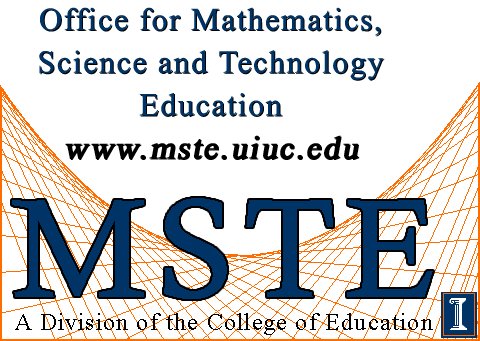Let's begin with an explanation of
the difference between accuracy and precision. Accuracy refers to how
close a measurement is to the true value of what is being measured.
Precision refers to how close measurements of the same quantity are to
each other, even if they are not close to the true value. For example,
the darts on the dart boards below represent sets of measurements. A
bull's eye represents a perfect measurement--a measurement exactly the
same as the true value.
NEITHER PRECISE NOR ACCURATE

Since none of the darts are close to the bull's eye, the measurements
they
represent are not very accurate. Also, since the darts are not very
close to each other, the set of five measurements here is not very
precise either.
BOTH PRECISE AND ACCURATE

The measurements are all close to the true value, so they are
accurate. Also, the measurements are all close to each other, so they
are precise.
PRECISE BUT NOT ACCURATE

Since all of the measurements are close together, they are precise, but
since they are not close to the true value, they are not accurate.
Activity
1:
See if you
can draw and describe (as done in the pictures and captions above) the
case where a set of measurements is fairly accurate but not very
precise.
Activity 2:
FOR DAVE
STUDENTS:
Each
student measures the diameter of the cylinders various cars and record
the measurements in a spreadsheet.
FOR ALL STUDENTS:
- Were the Measurements accurate? Why or why not?
- Were the measurements precise? Why or why not?
- Do you see any similarities or differences among cars
manufactured by different companies?
- The equipment, tools, and technology available to you
when you make measurements will affect your accuracy and precision.
Depending on the design and age of a measuring instrument as well as
other factors such as the skill of the people using the instruments,
real-life measurements can be accurate or inaccurate, precise or
imprecise, or any combination of these.
- What variable in your experiment corresponds to the
reliability of your measurements (in terms of both accuracy and
precision)?
FOR HIGH SCHOOL STUDENTS IN
DUPAGE COUNTY:
Draw a dart board on a sheet of paper and set it on the
ground. Have each member in a group of about five drop a penny on the
target from a height of about one meter, aiming for the bull's eye.
Each penny represents a measurement of some quantity, say, the
compression in the cylinder.
- What does the bull's eye represent?
- How many compression measurements were made?
- Were the measurements accurate? Why or why not?
- Were the measurements precise? Why or why not?
Now simulate a new set of measurements by dropping pennies
from a height of 2 meters.
- Has the accuracy and/or precision of your measurements
changed? If so, how. Explain.
- The equipment, tools, and technology available to you
when you make measurements will affect your accuracy and precision.
Depending on the design and age of a measuring instrument as well as
other factors such as the skill of the people using the instruments,
real-life measurements can be accurate or inaccurate, precise or
imprecise, or any combination of these.
Activity 3:
FOR HIGH SCHOOL STUDENTS IN
DUPAGE COUNTY:
Suppose your team is challenged to determine the
mass of an object using a balance. Each member of the team measures the
mass on the same balance. Here are you data:
|
Team member
|
Mass in Grams
|
|
1
|
39.97
|
|
2
|
40.06
|
|
3
|
39.98
|
|
4
|
39.97
|
|
5
|
40.02
|
Your team decides to report your mean (average) mass, which is
40.00g. Your instructor then informs you, however, that the actual mass
is 45.00g.
- Who (or what) would your instructor blame for the fact that
your reported mass was too low by 5/45 = 1/9 or about 11%?
- What can you conclude about the precision of your balance?
- What can you conclude about the accuracy of your balance?
- How might this type of error (called a systematic error)
have been avoided?
-Back
to Problem Statement- -Go
to Day 2 Lesson-




